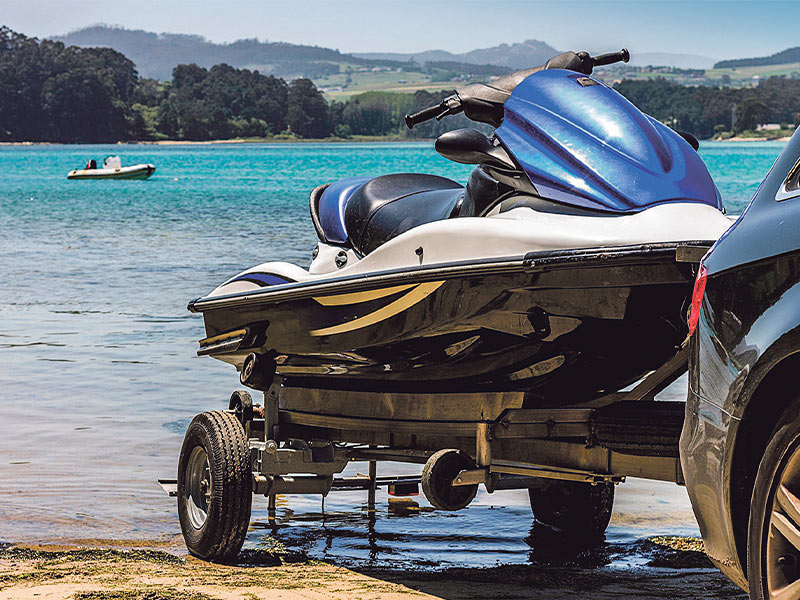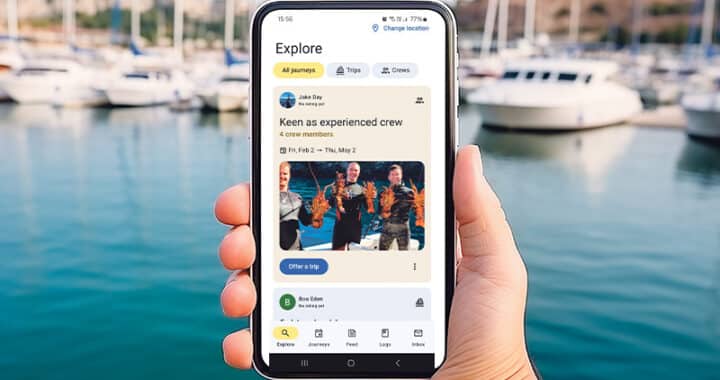Govt targets maritime emissions
5 min read
It is the first time the fund has focused on commercial maritime projects. Photo: Getty Images
The Government has announced a new funding round aimed at reducing emissions from the maritime sector.
The funding is the eighth round of the Government’s Low Emission Transport Fund (LETF), which supports the demonstration and adoption of low-emission transport technology, innovation, and infrastructure to help accelerate the decarbonisation of the New Zealand transport sector.
It is the first time the fund has focused on commercial maritime projects. Up to $2.5 million will be available.
According to the Energy Efficiency and Conservation Authority’s (ECCA) ‘Off-road liquid fuel insights: Quantifying off-road diesel and petrol use in New Zealand July 2021’ report, of all transport sectors, recreational marine uses the most off-road petrol per year, at 388 million litres.
“This is a substantial use of fuel and is an issue that warrants further research,” the report says.
New Zealand has one of the highest levels of recreational boating activity in the world. At more than 15,000km, it has the 10th-longest coastline in the world.
Boating continues to increase in popularity. According to the New Zealand Clean Boating Programme, which aims to help marine-related businesses and recreational boats improve their environmental performance, it is vital that boaties understand the potential impact they can have on New Zealand’s unique marine environment.
EECA’s report shows New Zealand has an estimated 92,146 jet skis, 175,077 dinghies with engines, 215,621 power boats smaller than six metres, 81,088 power boats larger than six metres, and 36,858 sailboats larger than six metres.
Of these boats, 86% use petrol while 14% use diesel, amounting to 88 million litres of petrol and 75 million litres of diesel used in boats annually. Most powered boats in New Zealand use petrol and refuel through the retail network, with 85% refuelling via service stations, with only 15% refuelling at marinas.

In this new funding round, the Government says it is looking for projects in the areas of marine vessels, electric outboard motors, charging infrastructure to service marine projects, and associated technologies or services.
Hydrogen fuel cell vessels and other technologies may be in scope if they make use of New Zealand’s renewable electricity advantage and a reliable supply exists.
The round’s investment focus is on projects that encourage innovation in approaches and technologies that can result in marine transport decarbonisation through, for example, electrification, hydro foiling, and hybrid drives, as well as operational emissions reduction activity that can improve emissions without large capital investment/vessel replacement through behaviour change and optimisation.
The round also focuses on support services and sector development of low-emission marine technology maintenance, battery, repair, and other support services and public charging infrastructure specific to marine projects.
According to EECA, the maritime sector has a heavy reliance on fossil fuels and says there is an opportunity to transition boats to clean energy – to protect our oceans and environment.
EECA chief executive Andrew Caseley said there is huge potential to decarbonise.
“Fuel use in the maritime sector, including coastal shipping, commercial fishing boats, ferries, and recreational vessels, is responsible for 1.5 million tonnes of carbon dioxide equivalent emissions each year, the equivalent of around 600,000 cars. That’s nearly 10% of our total transport emissions,” he said.
“In the last couple of years, there have been encouraging moves towards electrification of water-borne transport, with a growing electric boat-building industry that’s had interest here and overseas. But we know there is significantly more energy and emissions savings potential – the industry is still young.”

EECA, which administers the LETF, commissioned research that identified low-emission technologies, from fuel efficiency measures to electrification, which could be deployed across different marine sectors and vessel sizes.
The study found that beyond electrification, several key technologies can offer significant improvements to fuel efficiency, therefore, lowering emissions. These include propeller optimisation, which reduces propulsion energy lost; electrification where possible for greatest decarbonisation; hydrofoils, which improve performance and energy efficiency; biofuels and biofuel blends, which offer cleaner fuel; hull coating, which improves energy efficiency across a variety of vessels; hybrid drive, which requires a high investment, but a good expected ROI; and shore power, which will require investment to support dockside charging.
While emissions reduction potential varies according to available technology, the report says all energy efficiency measures will deliver savings. Furthermore, the report found that most technologies cost less than $1 million and show a reduction in operating costs.
However, the report outlines key challenges to overcome in the marine sector, including Capex/Opex costs, infrastructure, operational life cycles, new builds versus retrofitting, and mindsets.
Earlier this year, Maritime New Zealand introduced new environmental rules for recreational boats with engines over 130kW (174.3hp), outlining what recreational boat owners need to do to reduce harmful emissions.
The rules are part of New Zealand’s commitment to MARPOL Annex VI, an international agreement that aims to reduce air pollution from ships.
The New Marine Protection Rules apply to recreational boat owners who use their boats in the sea and aim to limit the emission of harmful sulphur oxides from fuel use and nitrogen oxides from engines, which are both harmful to human health and the marine environment.
The rules mean engines over 130kW installed between 19 May 2005 and 1 January 2023 need to meet emissions limits and have the required documentation by 30 June 2032.
Engines installed before 19 May 2005 that have not been majorly modified or engines used solely for emergency purposes or on boats that operate only in lakes or rivers do not need to adhere to these rules.
Caseley said the LETF has already proven itself a catalyst for low-emissions innovation in road transport, helping to reduce emissions in light and heavy vehicles.
“Just in the last year, we’ve seen the first electric milk tanker take to the roads, the adoption of battery-swap technology, and even a solar-panelled bus. I have high hopes we’ll be able to deliver for the marine sector, too.”
In this round, the Fund will focus on projects in the marine sector demonstrating innovative solutions that will enable future adoption and deployment, reduce energy-related emissions in the sector, address market and organisational barriers through co-investment and diffusion of new knowledge and learnings, and share learnings and knowledge to stimulate wider replication of successful projects and solutions in
the sector.
Applications for the round close on 8 March 2023.



